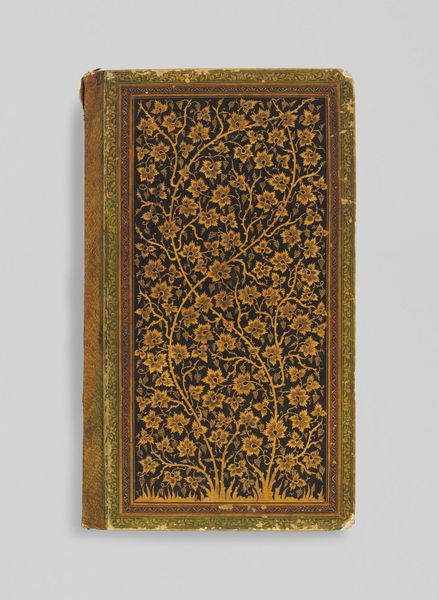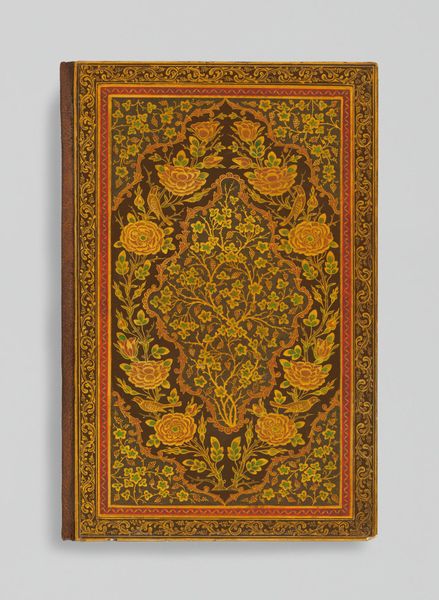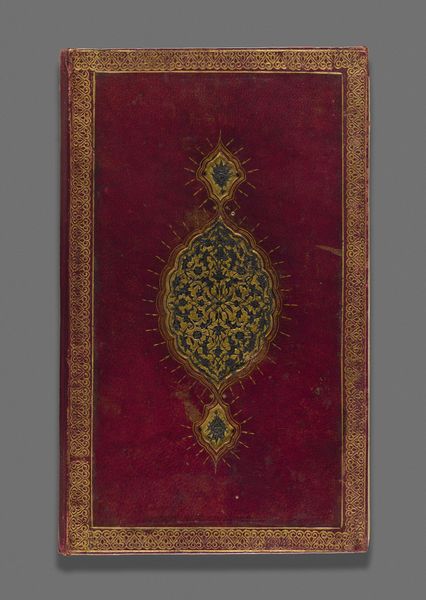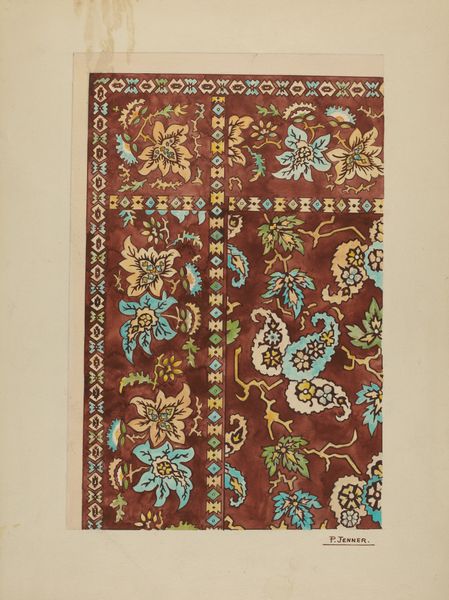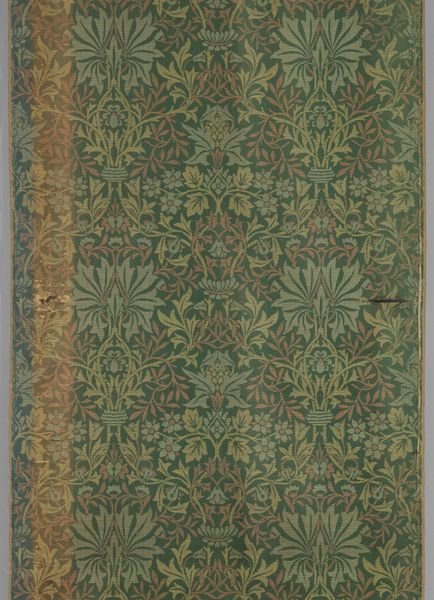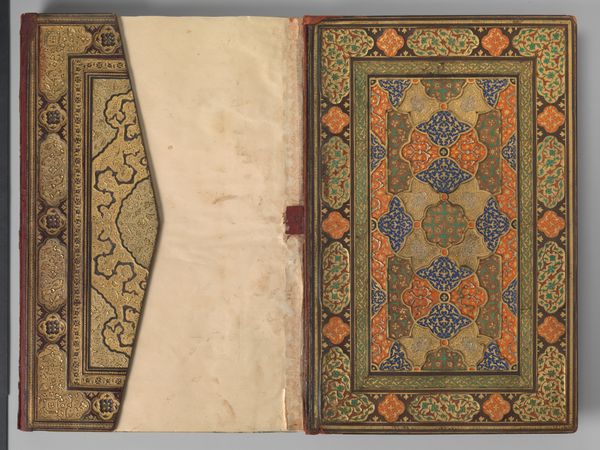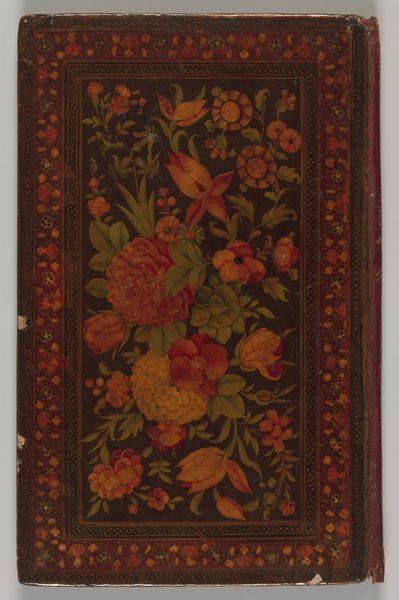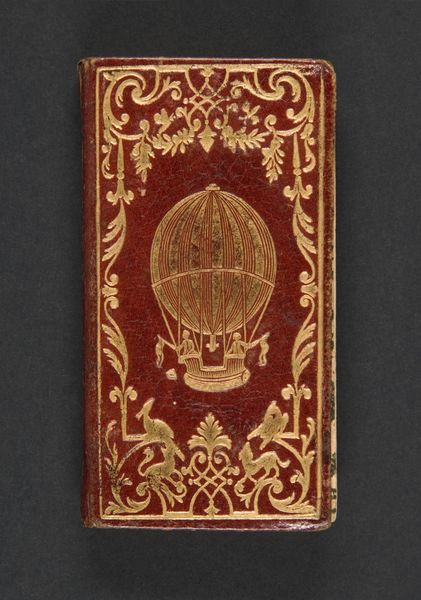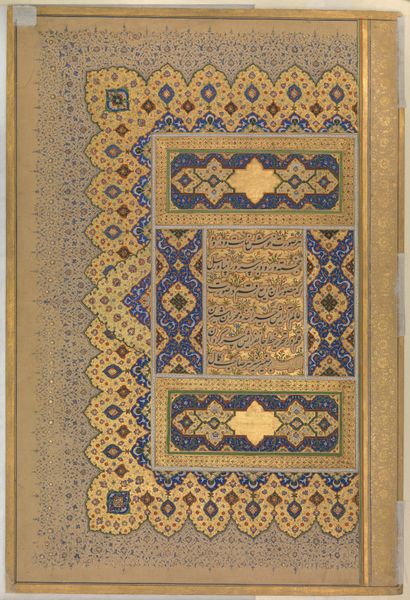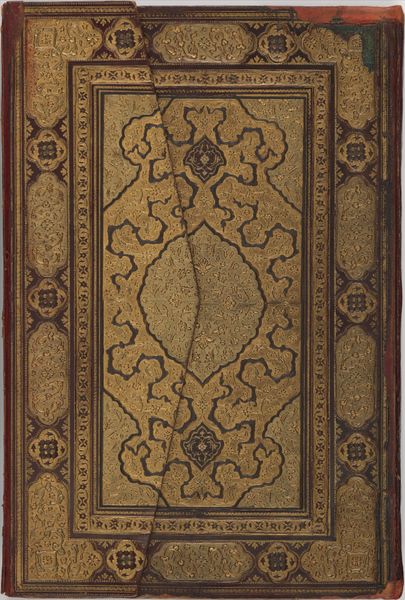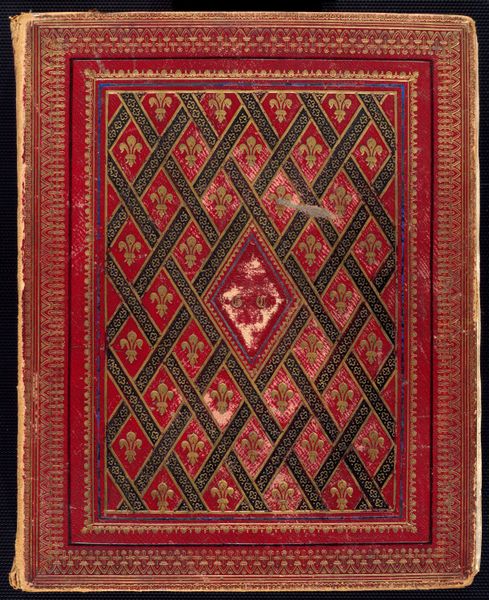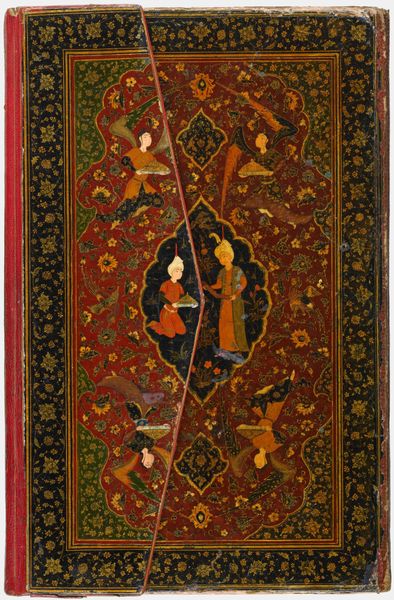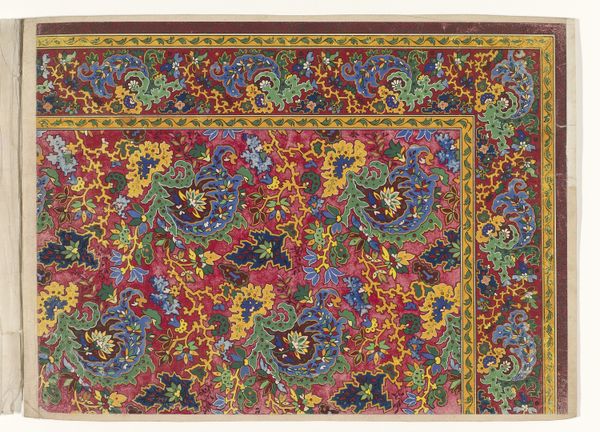
Miscellany of Prayers and Suras from a Qu'ran 1809 - 1859
organic
organic pattern
islamic-art
decorative-art
miniature
Dimensions: H. 7 7/8 in. (20 cm) W. 5 in. (12.7 cm)
Copyright: Public Domain
Curator: I am immediately drawn into the meticulous ornamentation; the detail work is incredible. Editor: We’re looking at a book cover, specifically the Miscellany of Prayers and Suras from a Qu'ran, dating between 1809 and 1859. The creator is Abu Talib al-Isfahani. Curator: The abundance of foliage strikes me as something beyond simple decoration. Islamic art often steers away from figural representation, but natural imagery bursts forth with an almost desperate intensity to convey the divine. Do you sense the divine presence woven through this intricate pattern? Editor: I am more attuned to the materiality of devotion. These details didn't just spontaneously occur, right? The organic pattern, while lovely, hints at workshops and labor division; each of those blossoms meticulously rendered, not one quite alike. It prompts questions about the distribution, and the economy of producing something this intricate. Who owned it, what social circles did this traverse, and how? Curator: Of course! But consider this dense verdant ground - an earthly paradise pointing towards spiritual promise? I wonder if that speaks to a period of specific social optimism, a kind of visual prayer. I detect in this period of decoration a wish for greater auspiciousness and plenty, given its very crowded ornamentation! Editor: Perhaps, but how much of that intention is filtered through layers of craft practice? Let's imagine the artisan, perhaps within a workshop, receiving a commission – are they channeling divine grace, or simply executing skilled labor? It reminds me of tapestry weaving – immense collective labor producing singular monumental effect, or, I surmise, individual labor geared toward a devotional purpose and ultimate social distinction of some wealthy, privileged owner. Curator: An excellent counterpoint. It demonstrates the push and pull in objects of faith, the earthly and ethereal forever entangled. Editor: Yes, between the individual labor to create the object, and the cultural symbolism of what they ultimately meant to those who had them. Curator: Looking at it from my perspective, this exercise brought a deeper understanding of devotion across the temporal divide. Editor: And I think considering its tangible production reframes any purely symbolic reading—anchoring its past existence in something a bit more palpable.
Comments
No comments
Be the first to comment and join the conversation on the ultimate creative platform.
